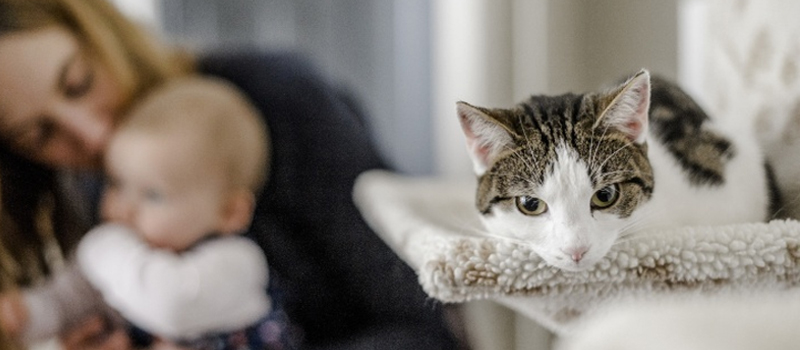Choosing to add a kitten to the family is quite an exciting time for everyone, especially the children. Now that you’re bringing the kitten home, the animal is going to become a lot more dependent on you as its primary caretaker because it’s been separated from its mom. You’ll need to plan ahead of time to ensure you’re providing a safe, comfortable, and enjoyable environment for the new addition. If you take the right approach, the cat will feel more confident and will quickly get the hang of living in your home.
Keep the Volume Down
If you have young children in your home, there are moments when they may get a bit rowdy and a bit too loud. However, loud talking often scares kittens because it’s not something they’re used to hearing. Make sure everyone in the household works a lot harder to practice their inside voices so that they’re not scaring the kitten by talking too loudly or getting too worked up.
In fact, you may want to encourage your child to come up with a “kitty voice” where he or she will speak in a soft tone, somewhat like a whisper. My favourite cat blog suggests that it encourages the children to speak nicely to the animal rather than roughhousing with it. Different cats have different types of personalities and not all cats care about volume, but it’s better to be prepared than to speak too loudly and scare the kitten in its new home.
Practice Handling Properly
Some children are a bit too rough with animals simply because they don’t know any better. It’s a good idea to get the kitten and the children used to one another by holding the kitten in your hands and telling the children to put their hands out. If the kitten decides to smell the hand of one of your children, you can encourage that child to gently pet the cat.
Let your children know to be cautious about touching the kitten’s stomach. Many cats don’t like belly rubs, but there are some that don’t mind at all, so it just depends on the personality of the kitten you’re bringing home. Show your children the proper way to hold a cat, which includes keeping the cat close to the chest while providing support. Not all cats like getting picked up, so make your children know of the signs they need to be aware of that will let them know if the kitten wants to get down instead of being held.
If your children understand the cat’s body language a bit better, they’ll be less likely to get scratched. Some cats are a bit more patient with children, but you won’t know until you introduce the kitten to your children.
Create Special Bonding Moments
Cat love receiving treats. One way to get your new kitten to bond a bit better with the children is to let the children give the kitten a few treats here and there. It allows the cat to feel a bit more relaxed, knowing the children are supplying the animal with something tasty and enjoyable instead of posing as a potential threat.
Give the Kitten Some Rewards
Show the kitten you appreciate its patience with the children by rewarding the animal. You can give the kitten special attention as a reward or offer a few tasty catnip treats.
Choose the Right Cat
If you have younger children, it’s often recommended to adopt or purchase an adult cat. Of course, you can have a kitten if that is what you personally prefer but handling a larger cat that is already trained and knows how to cooperate around young children may be a lot more ideal than handling a kitten that may be less predictable.
Always Supervise
Make sure you’re supervising your children around the cat. If the cat has a bit of a bad temperament, you should keep the children and cat separate unless you’re in the room with them. It’s the best way to prevent any problems from occurring while you’re not around to watch the interactions between the kids and the cat.

